(Fatherland) - Hundreds of hectares wide, this green steppe is not in some distant European country but right in the North of our country.
(Fatherland) - Hundreds of hectares wide, this green steppe is not in some distant European country but right in the North of our country.
Mentioning the vast green steppes, endlessly stretching to the horizon, most visitors will immediately think of distant European countries. However, every September, when autumn comes, on forums and travel groups, images of a steppe appear and receive attention, importantly, it is not in Europe, but right in the North of our country.
After seeing the pictures of this steppe, everyone must admire its beauty, not thinking that right on the S-shaped strip of land, there is a place like this that is not inferior to foreign countries. Especially when buckwheat flowers bloom, the scenery here will appear even more sparkling and magical.
The place being mentioned is the Suoi Thau steppe, Ha Giang, also fondly nicknamed "Switzerland in the heart of Ha Giang" by many tourists.
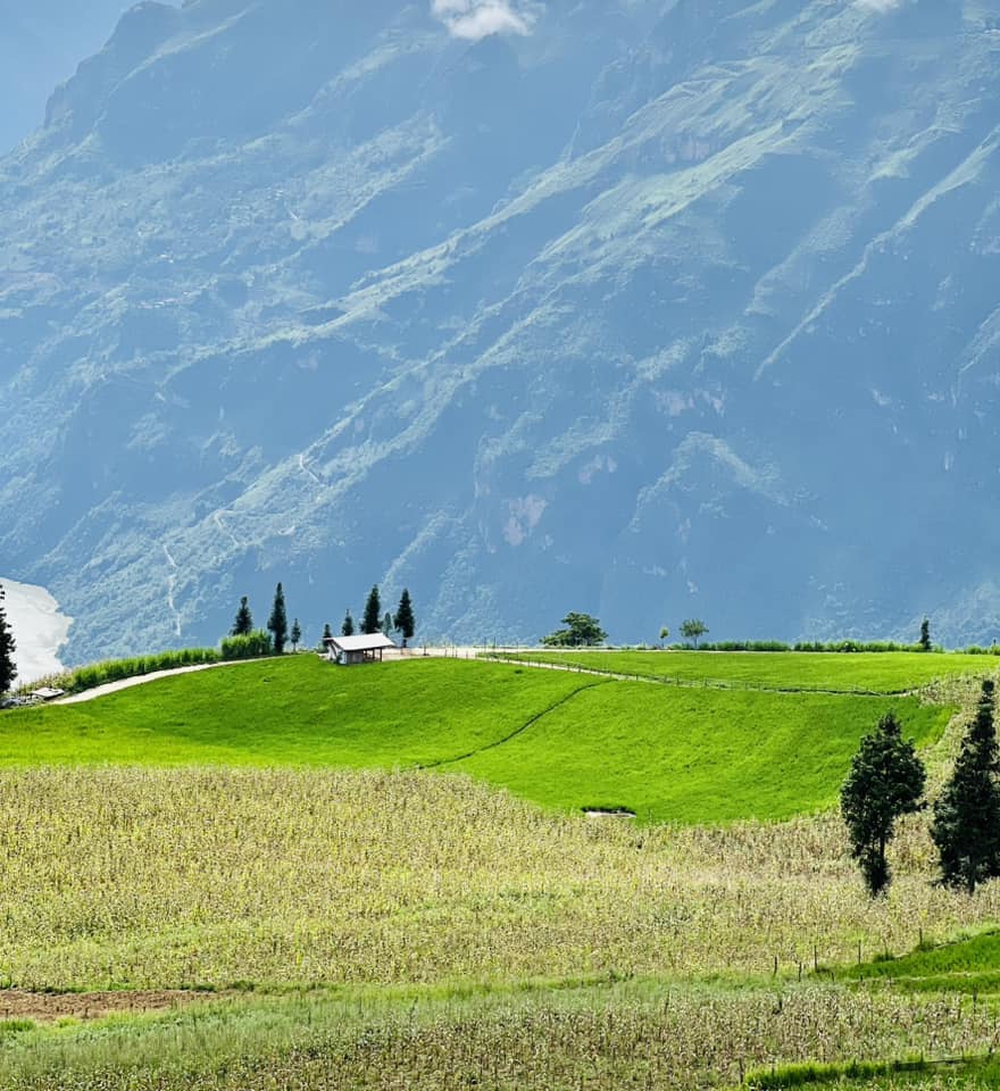
Images of the Suoi Thau steppe appeared on social networks and many people did not believe that it was in the North of Vietnam (Photo by Le Sy - Group Check in Vietnam)
The exact location of the steppe is in Nan Ma commune, which connects Xin Man district (Ha Giang) and Bac Ha district (Lao Cai). Compared to many other tourist destinations in Ha Giang in particular as well as in the Northern mountainous region in particular, Suoi Thau steppe is still a name not really known to many tourists, still strange and new. batch.
However, with its unreal natural beauty, this place has great potential for tourism development, promising to become one of the must-visit places when coming to Ha Giang, especially during the buckwheat flower season.
Road to Suoi Thau steppe
To travel to Suoi Thau steppe, if starting from the capital Hanoi, visitors will have to divide the journey into 2 stages. Because in Ha Giang, Xin Man district, where the steppe is located, is considered the most difficult district in terms of transportation infrastructure and connectivity, compared to other districts. Although the route to the district already exists, it still does not really meet the needs of passenger transport vehicles.
For the first leg from Hanoi to Ha Giang, visitors can choose vehicles from motorbikes, cars, passenger cars, or sleeper buses. This is a quite familiar route to travel enthusiasts.
The most suitable place in Ha Giang to stop and change flights to Suoi Thau is Coc Pai town - the center of Xin Man district. Tourists will start the second leg from here. Although the distance is only about 6km long, it is a small, bumpy and winding pass. The most suitable vehicle for this stage 2 is a motorbike.

The road from Ha Giang to Suoi Thau steppe is considered difficult to travel (Photo Phuong Mai Tran - Group Check in Vietnam)
The total time for visitors to reach the steppe will be longer than other famous places in Ha Giang, about nearly 7 hours. But when arriving, all the efforts of visitors through long travel times and difficult roads will be rewarded by the scenery of the vast steppe. Tourist Tran Mai Phuong Mai from Hanoi shared in a travel group: "The journey to Suoi Thau - Xin Man steppe is extremely arduous. But getting there is really not in vain."
Beauty worthy of the title "Switzerland in the heart of Ha Giang"
According to information from the Vietnam National Tourism Administration, Suoi Thau steppe has an area of up to hundreds of hectares, at an altitude of 1,200m above sea level. Around the steppe, there are about 60 households living, most of whom are Mong ethnic people. From Suoi Thau, visitors can see the communes of Pa Vay Su, Chi Ca, Then Phang, Coc Re, or Coc Pai town 6km away.
All that makes visitors "fascinated" by this place is the wild, majestic natural scenery, along with the fresh, dust-free atmosphere that cannot be found in the hustle and bustle of the city.
Each season, the steppe wears different clothes. In the summer, Suoi Thau is covered in green, stretching to the horizon. In the fall, especially from mid-September to November every year, when a large number of buckwheat or buckwheat flowers bloom, a large part of the steppe will turn pink and white, creating a beautiful scene. extremely poetic.
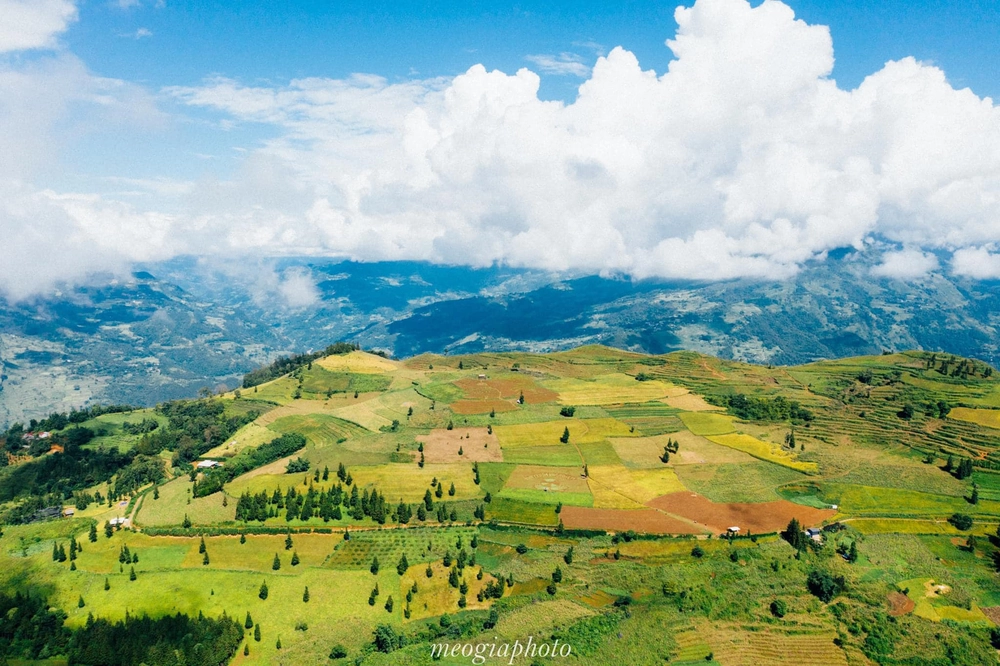
Suoi Thau steppe when viewed from above, with different colors, creating a perfect picture (Photo Meogiastudio)

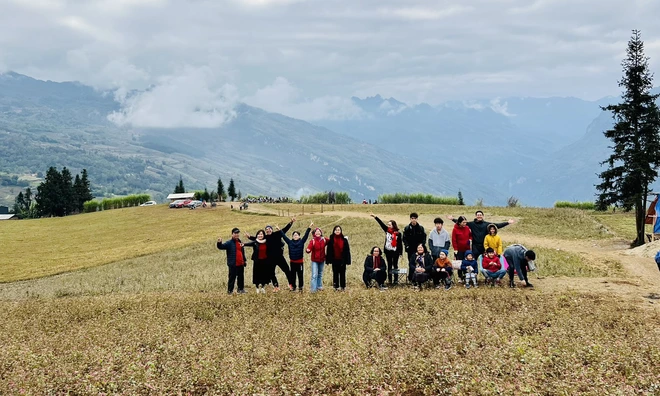
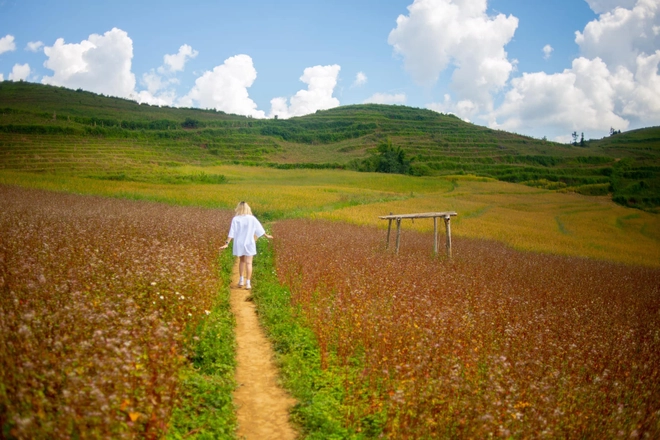

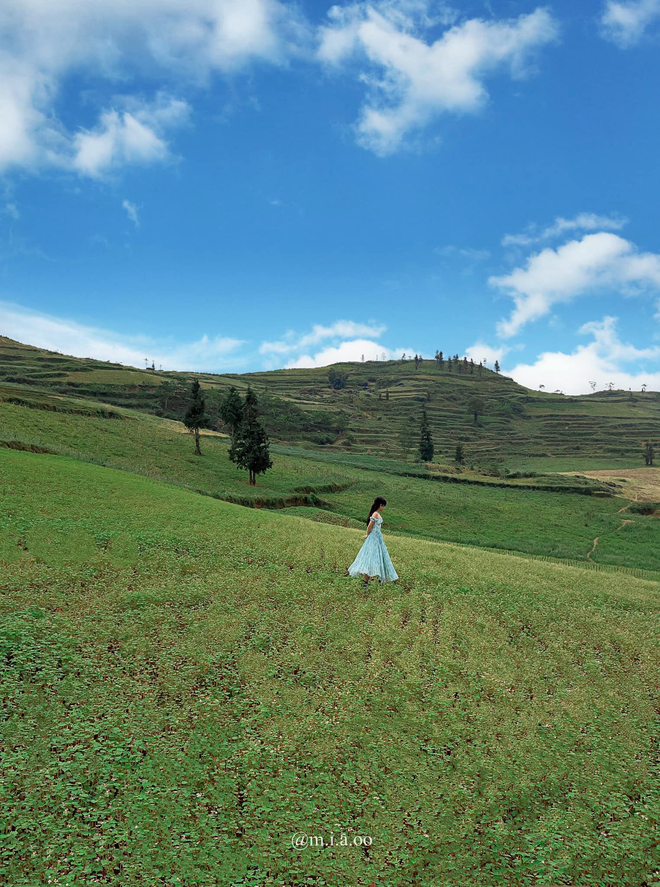
Tourists take beautiful photos while at Suoi Thau steppe (Photo by Hoang Minh Thuong, Nguyen Thu Huong - Group Check in Vietnam)
Dotted at other times of the year, brown and yellow colors appear in rice fields, corn fields or sa bushes growing along the fields, or small rivers and streams at the foot of the mountains. All those colors blend together so that in the photos and videos from flycams (overhead cameras), Suoi Thau steppe appears like a perfect picture, painted by mother nature.
Many tourists who have never been to Suoi Thau, after seeing photos of the blue sky, white clouds, and beautiful steppes here, commented that the scenery "doesn't look real", or "in real life it certainly won't be like that". on the photo". However, tourists who have experienced it confirm that "in pictures, in real life, the scenery of Suoi Thau is really like that".
Tourist Thuong Thuong from Hanoi, who recently had a trip to Suoi Thau on September 2, shared: "The scenery here is really beautiful. The pictures I uploaded to Facebook didn't even need any processing." How to edit or add any effects? Some tourists even said that the scenery in Suoi Thau looks beautiful in photos, but it's even more beautiful on the outside: "It looks beautiful in photos, but in reality it's many times more beautiful," tourist Loan Tran added.
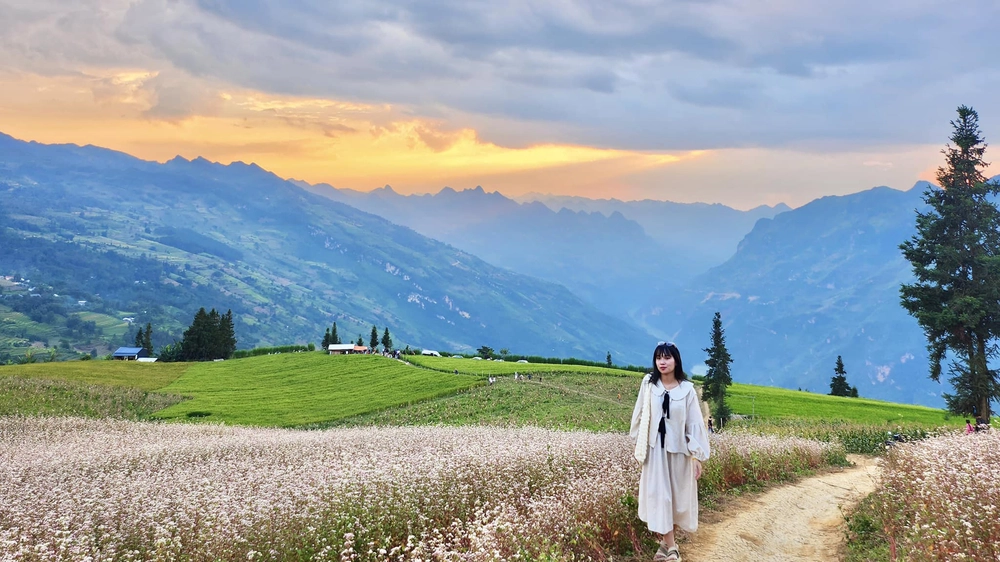
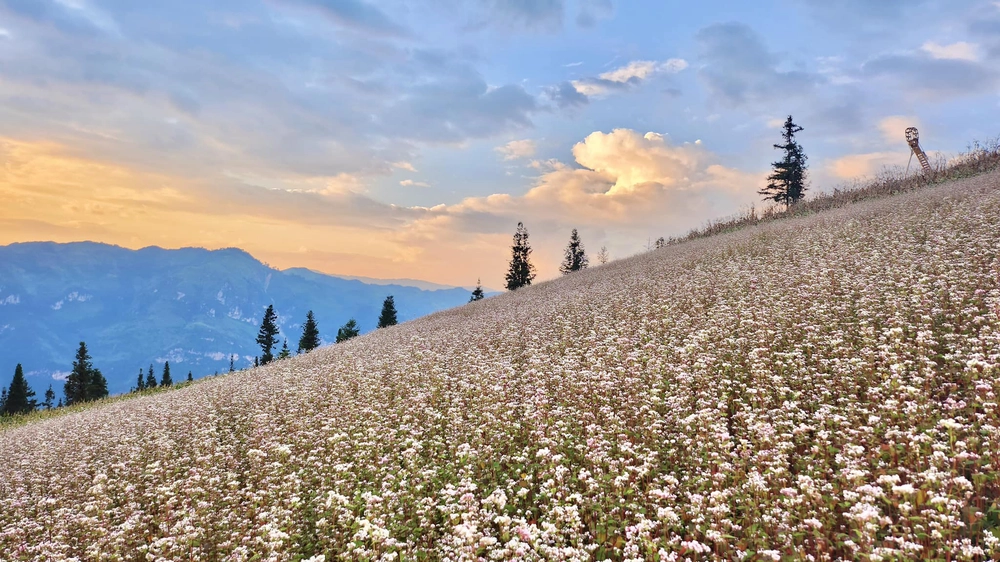
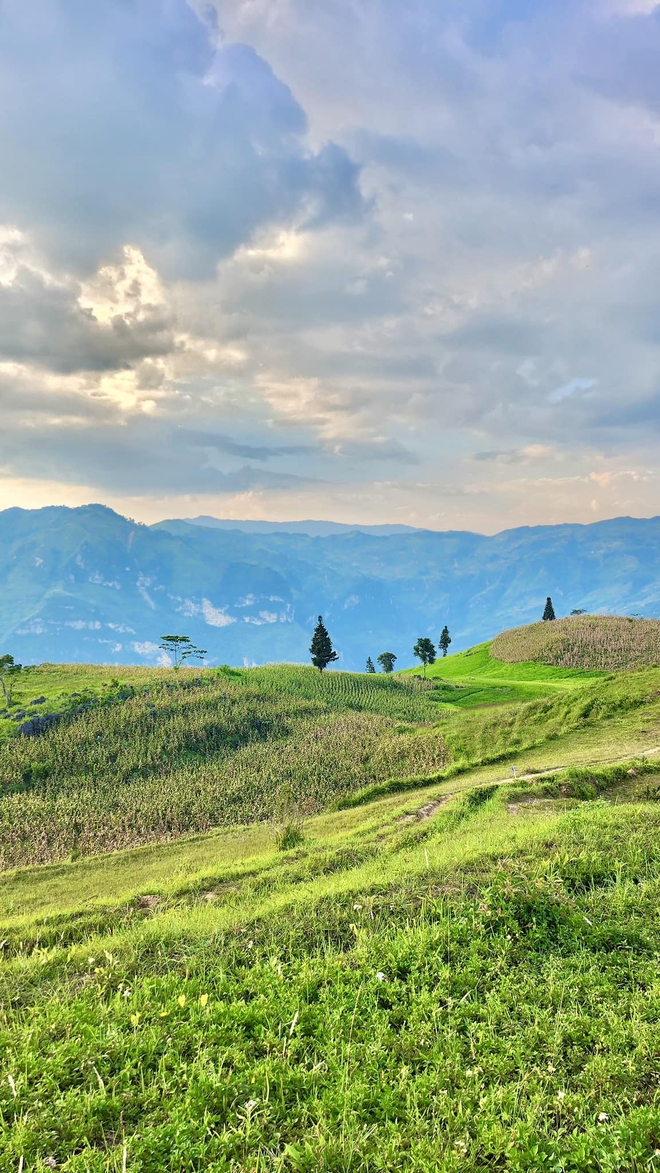

Photos taken at Suoi Thau steppe were shared by tourist Thuong Thuong from Hanoi and said that no editing effects were needed (Facebook photo of Thuong Thuong)
Besides simply sightseeing and sightseeing, many tourists now also choose to camp on the steppe. Essential items such as tents, tables and chairs, food, and drinking water should be prepared by visitors, because the surrounding area is wild and does not provide many services. Occasionally, visitors can also encounter indigenous people or children playing, or participating in labor and production activities on the steppe.
Some households near the steppe area have also proactively grasped the tourist situation to make money. For example, Mr. Giang Seo Trang's house, one of the households involved in growing buckwheat flowers on the prairie, set up a shack for tourists to take photos. He said that each customer taking photos costs 20,000 VND, thanks to which his family earns an extra amount every day.
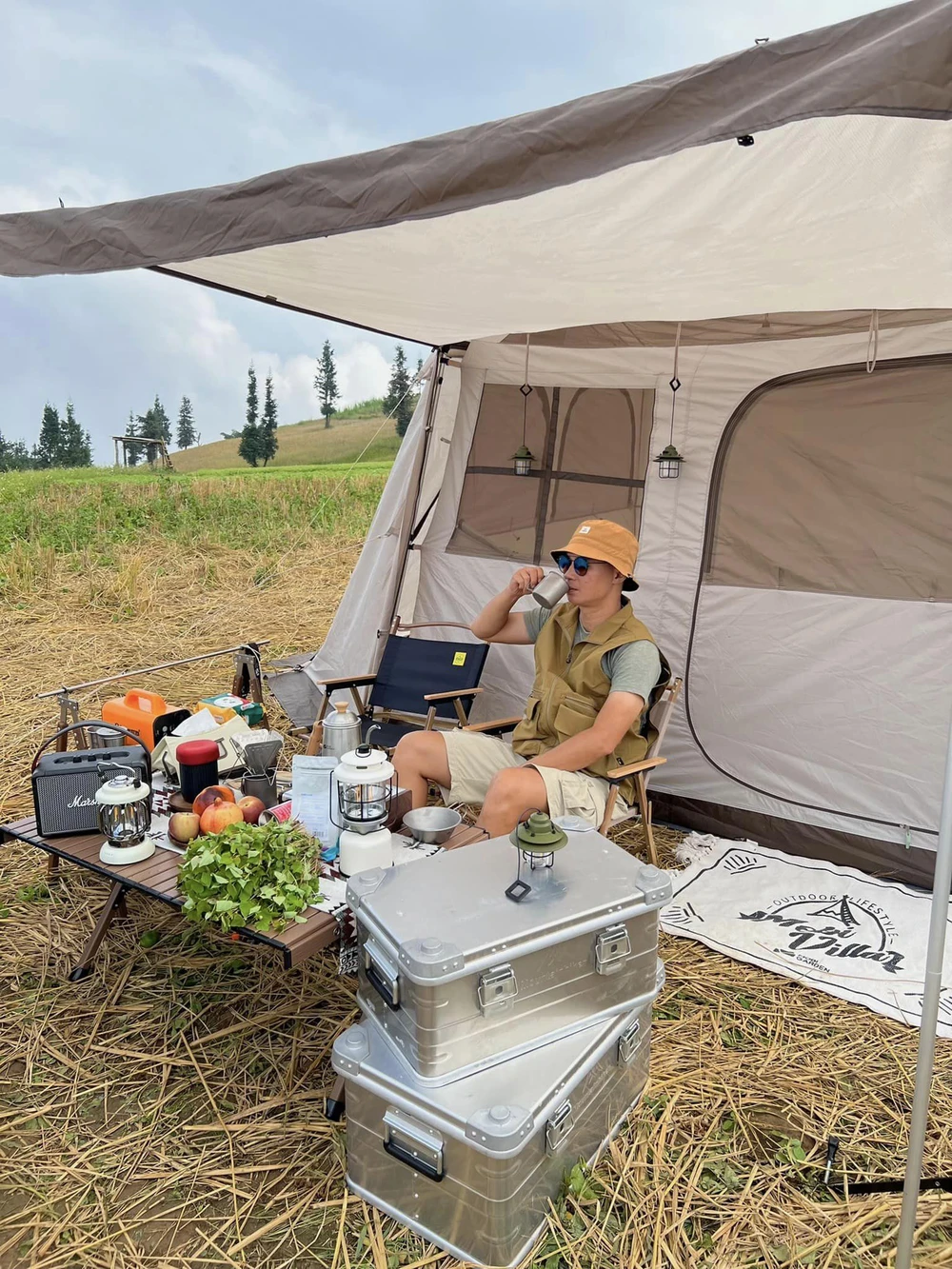
Many tourists choose to camp in the middle of the steppe (Photo Tran Quang Tu - Group Check in Vietnam)
Suoi Thau Steppe is still a natural tourist destination, without much intervention from humans. According to Chairman of the People's Committee of Xin Man district (Ha Giang) Pham Duy Hien, the province and district's viewpoint is to preserve the landscape of the steppe, because currently there are not many areas left like here.
The district has the orientation of not affecting the core area, only developing services in the outer part; At the same time, considering the future plan, tourism development will be in the direction of experiential tourism, without motorized vehicles in or out. Instead, there is a service to pick up tourists by rudimentary vehicles of local people. The purpose is to both preserve the natural landscape and create jobs for people.
Besides the highlight of Suoi Thau Steppe, Xin Man district has many other unique tourist attractions, such as Nam Dan ancient stone beach, Tien Deo Gio Waterfall, Quang Nguyen mineral spring. Visitors here can combine many locations to have the most complete journey.
Ha Giang
909 view
Update day
: 09/09/2023
Thu Phương

 vn
vn en
en ja
ja ko
ko zh
zh




















































